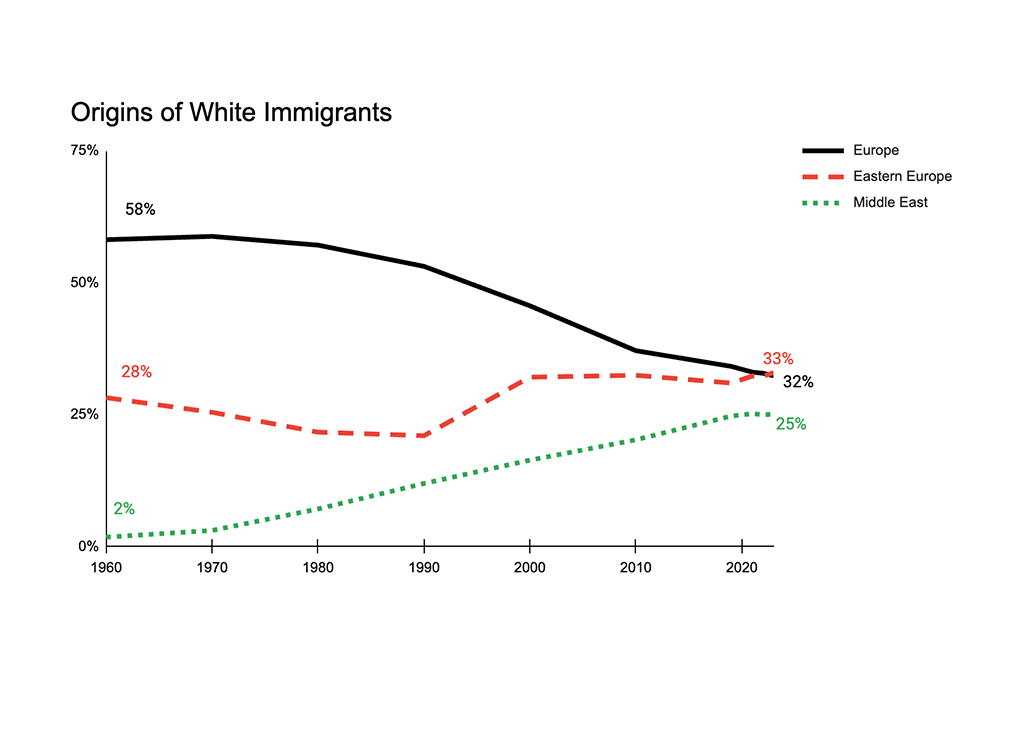Hidden Heterogeneity: How the White Category Masks Interethnic Health Inequality
Read, Jen’nan G. and Fatima Fairfax. 2025. Demography.
Most studies of racial health disparities in the U.S. use non-Hispanic Whites as a reference category. However, over the last several decades, changing immigration policies and world events have increased the diversity among Whites in the United States. Whites include people who trace their ancestries to Western Europe as well as Eastern Europe and the Middle East (including North Africa), and the proportion of White immigrants from the latter two regions has risen greatly in recent years.
In this study, Dr. Read and her colleague measure health gaps between immigrant and U.S.-born Whites, as well as disparities among White immigrants from different regions. They find that immigrants from the Former Soviet Union report significantly worse self-rated health and higher rates of hypertension than Whites born in the U.S. or in Western Europe. Middle Eastern immigrants also fare worse than U.S.-born Whites overall, but are more similar to Western European immigrants than to immigrants from the Former Soviet Union. This study demonstrates the importance of accounting for diversity among Whites when assessing health disparities.


